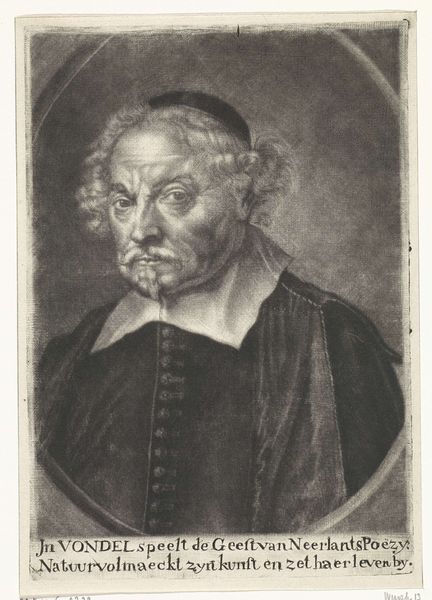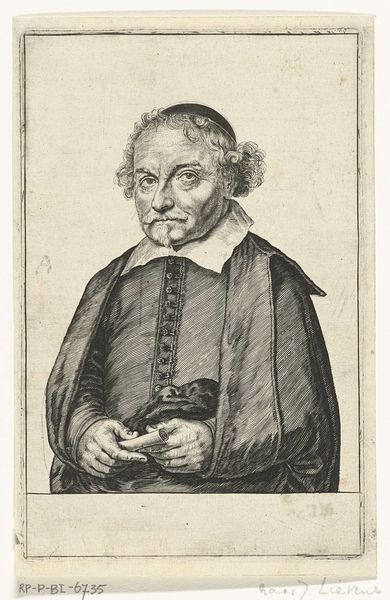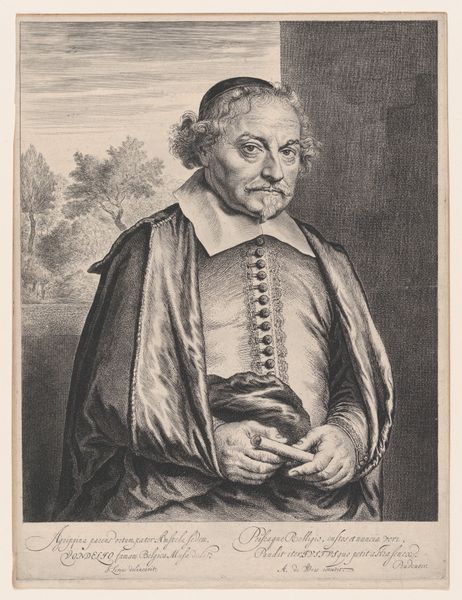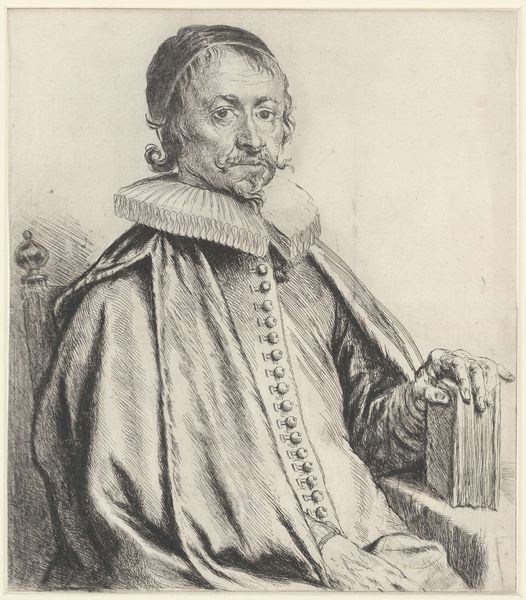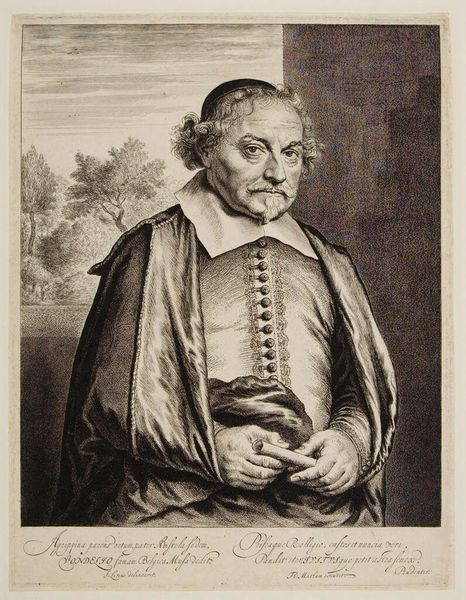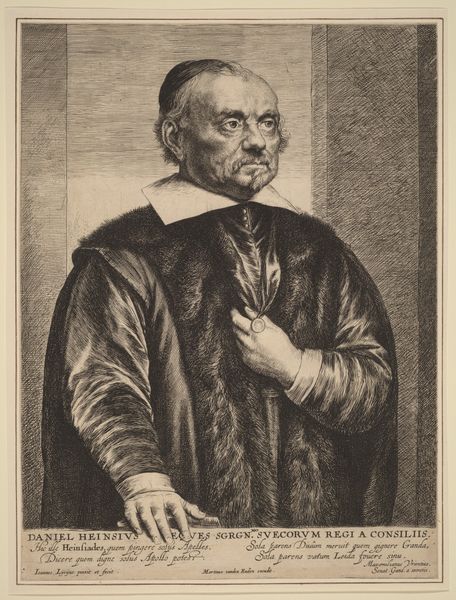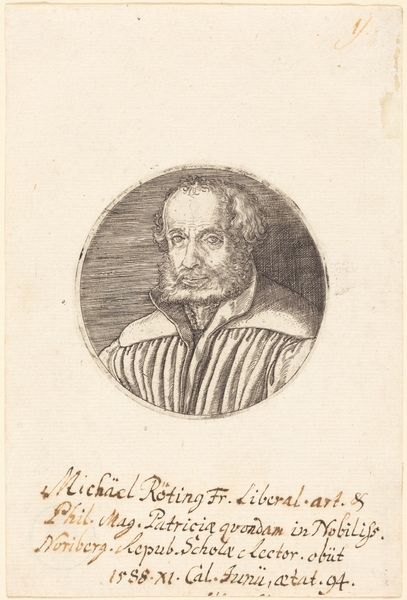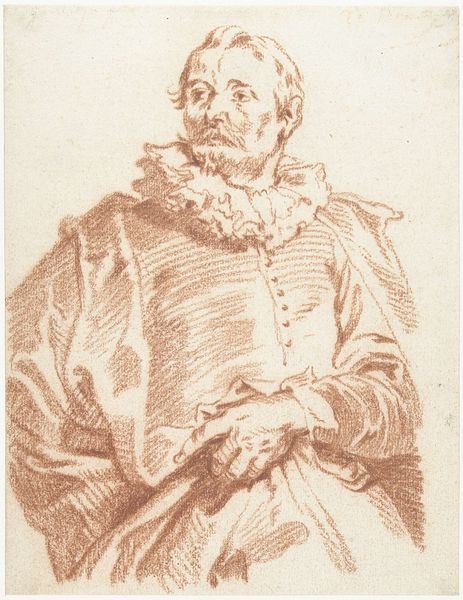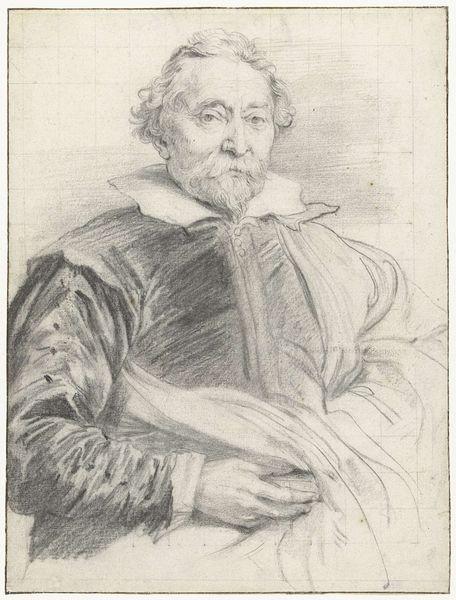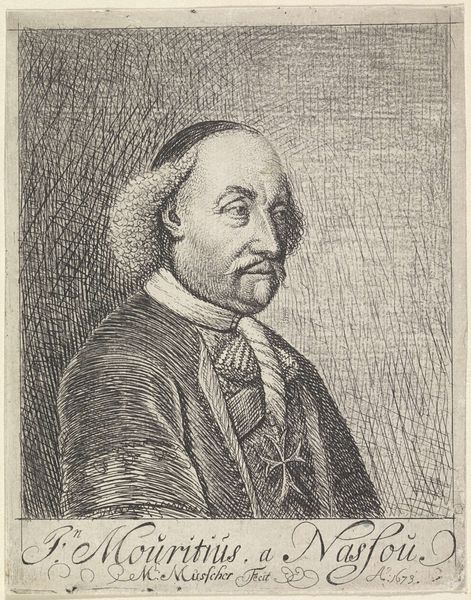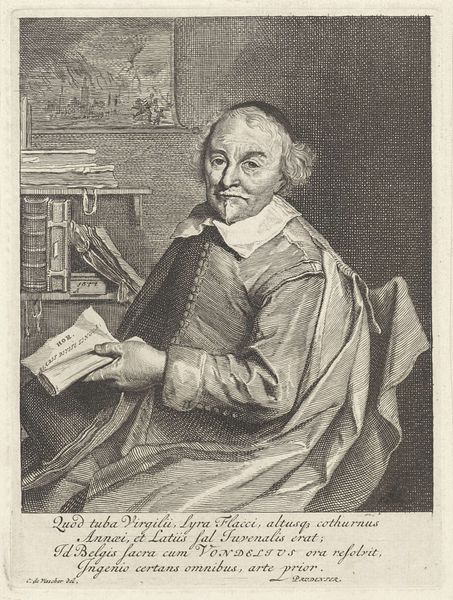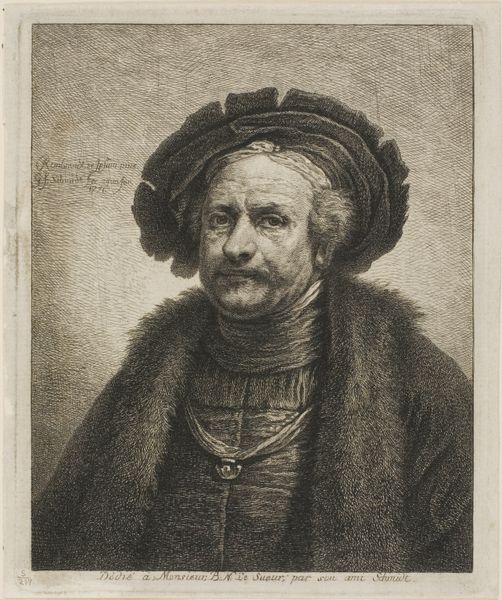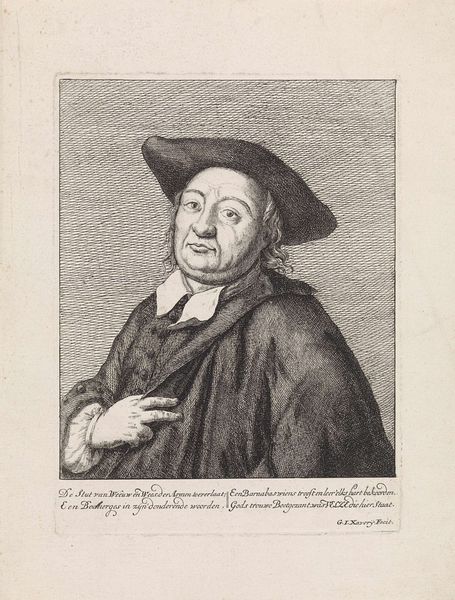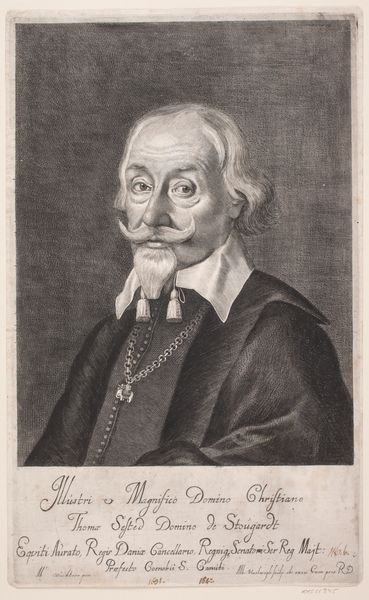
print, engraving
#
portrait
#
baroque
#
dutch-golden-age
# print
#
portrait drawing
#
engraving
Dimensions: height 290 mm, width 223 mm
Copyright: Rijks Museum: Open Domain
Editor: Here we have Jan Lievens’ "Portret van Joost van den Vondel," an engraving dating from the mid-17th century. I’m struck by the subject’s intense gaze. He seems so self-assured, maybe even a little intimidating. What kind of figure was Vondel in Dutch society, and how does this image contribute to his public persona? Curator: Vondel was a hugely influential figure – a poet and playwright who really shaped Dutch literature and, importantly, public discourse. Think of this portrait as carefully constructed image management. Lievens created this engraving within the context of the Dutch Golden Age, a period defined by civic humanism and the growing power of the merchant class. This wasn't just art for art's sake; portraits like these served to solidify status. The subject’s garb speaks to class and social standing. Consider the relationship between artists and their patrons during this period – was it ever truly free artistic expression, or was it always, to some extent, serving power? Editor: That’s fascinating. It’s not just about capturing a likeness, it’s about crafting a specific narrative for the viewer. Do you think prints like these were widely accessible? Who would have been the audience for something like this? Curator: While the wealthy merchant class certainly had access to artworks like this, printed images had far reaching appeal beyond just this class. They could be reproduced, disseminated widely, and therefore engaged more members of society. Their role in spreading ideas – even subtly reinforcing societal norms or celebrating certain figures – shouldn't be underestimated. And that raises an important question – how do visual representations shape collective memory and cultural identity? Editor: It's like early PR. Thinking about the artwork in that context shifts my perspective on what art, in general, even *does*. Curator: Precisely! I think understanding these aspects provides insight that the image doesn't hold simply on the surface. Editor: I hadn’t considered the socio-political elements so explicitly before. It makes me want to delve more deeply into the relationship between art and its historical moment.
Comments
No comments
Be the first to comment and join the conversation on the ultimate creative platform.
